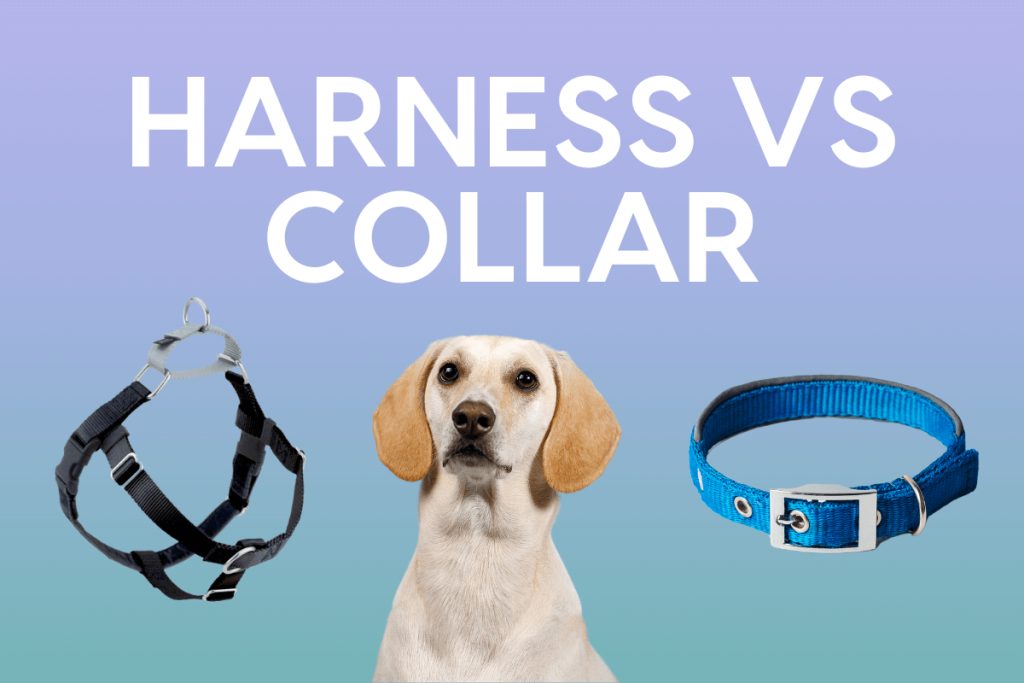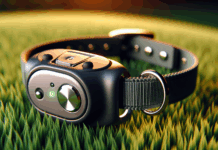Curious about the potential downsides of using dog collars? Look no further!
In this article, we aim to shed light on the cons of using dog collars, exploring the potential drawbacks and discussing alternative options for pet owners. From potential neck injuries to discomfort during training, we’ll uncover the lesser-known pitfalls of traditional collars to ensure you have a well-rounded understanding of the topic.
So, let’s jump in and discover the cons of dog collars you might not know.
This image is the property of images.saymedia-content.com.
Risk of Choking
Tightening
One of the main concerns with dog collars is the risk of choking. When a collar is too tight, it can pressure the dog’s throat, making it difficult for them to breathe. This is especially true for dogs that pull on their leash or engage in vigorous physical activity. If the collar is not fitted correctly or adjusted, it can tighten and restrict airflow, leading to distress and choking.
Getting Caught in Objects
Another danger associated with dog collars is the risk of getting caught on objects. Dogs are naturally curious and love to explore their surroundings. Unfortunately, this can lead to them getting their collar caught on fences, branches, or other objects. This can cause panic and distress for the dog; in some cases, it may even lead to injury or strangulation. Supervising your dog and ensuring that their collar does not risk getting caught is essential.
Neck and Spine Injuries
Strain on Neck Muscles
A collar can strain a dog’s neck muscles, especially if the collar is constantly pulling on the leash. This can lead to discomfort, pain, and potential muscle injuries. Dogs constantly pulling on their leash may experience chronic neck strain, affecting their overall well-being and quality of life.
Spinal Misalignment
In addition to neck strain, dog collars can also contribute to spinal misalignment. When a dog pulls on their leash, the force and pressure can be transferred to their spine, causing misalignment over time. This can lead to various health issues, including nerve impingement, muscle tension, and chronic pain. Regularly wearing a collar without proper training or handling techniques can increase the risk of spinal misalignment.
Allergic Reactions and Skin Irritation
Contact Dermatitis
Some dogs may develop allergic reactions or skin irritation from wearing a collar. This can occur due to the materials used in the collar or prolonged contact with the skin. Dogs with sensitive skin or allergies may experience symptoms such as itching, redness, and even rashes. It is essential to regularly check your dog’s collar for signs of irritation and make necessary adjustments or consider alternative options if needed.
Hot Spots and Sores
The constant rubbing and pressure from a collar can also lead to the development of hot spots and sores on a dog’s neck. Hot spots are areas of irritated and inflamed skin that can become painful and infected if left untreated. These sores can cause discomfort, itching, and pain for your dog and may require medical attention. Regularly inspecting your dog’s collar area and giving them breaks from wearing a collar can help prevent the development of these painful skin conditions.
Discomfort and Pain
Pressure and Rubbing
The pressure and rubbing from a collar can cause discomfort and pain for dogs, especially if they wear a collar for extended periods. The constant contact with the collar can lead to sore spots, hair loss, and even skin abrasions. Ensuring that the collar is adjusted correctly and fits comfortably is essential to minimize the risk of discomfort and pain.
Restricting Movement
Collars can also restrict a dog’s movement, especially if they are too tight or have a design that limits the range of motion. This can affect the dog’s ability to engage in running, jumping, and playing entirely. Dogs restricted in movement may become frustrated or exhibit behavioral issues due to a lack of physical and mental stimulation.
This image is the property of cdn-fastly.petguide.com.
Negative Behavioral Association
Negative Reinforcement
Using a collar as a form of control or correction can inadvertently create a negative association for a dog. If a dog is constantly being corrected or restrained using a collar, they may develop fear or anxiety associated with wearing one. This can lead to adverse behavioral issues, such as aggression, fear-based responses, or avoidance behaviors.
Increased Fear and Anxiety
Wearing a collar can contribute to an overall increased sense of fear and anxiety for some dogs. The feeling of having something around their neck can be uncomfortable and stressful, leading to heightened anxiety in certain situations. This can make it challenging for dogs to feel calm and confident in their environment, potentially affecting their overall well-being and quality of life.
Risk of Accidental Hanging
Getting Caught on Branches
In outdoor environments, there is always a risk of a dog’s collar getting caught on branches or other objects. If a dog runs freely and gets their collar snagged on a branch, they may panic and potentially injure themselves. This risk is significantly heightened if the collar does not have a quick-release mechanism, as the dog may struggle to free itself.
Leaping from Heights
Another risk associated with dog collars is the potential for accidental hanging when dogs leap from heights. If a dog jumps off a high surface, such as a ledge or a fence, their collar may get caught on the way down. This can lead to a dangerous situation where the dog is left hanging by their collar, causing significant injury or even death. Ensuring that collars have safety features is crucial to prevent such accidents.
This image is the property of www.thesprucepets.com.
Limited Communication and Expression
Inability to Bark and Communicate
While collars are commonly used for identification and leash attachment, they can also limit a dog’s ability to communicate and express themselves. Dogs communicate through various vocalizations, including barking, growling, and whining. Wearing a too-tight or restrictive collar can muffle these sounds and limit the dog’s ability to effectively communicate their needs or emotions.
Hiding Health Issues
Additionally, collars can make it difficult for owners to notice subtle signs of health issues in their dogs. For example, if a dog is experiencing neck pain or discomfort, they may exhibit changes in behavior or posture. However, if they constantly wear a collar, these signs may go unnoticed, delaying the diagnosis and treatment of potential health problems. Regularly examining your dog’s neck and removing their collar for short periods can help ensure early detection of any underlying issues.
Risk of Injuries During Play
Collars as Grab Points
During playtime, dogs often engage in rough and active play, which can involve jumping, wrestling, and grabbing each other by the neck. A dog wearing a collar can become a grab point for another dog, leading to unintended injuries. Pulling on the collar during play can cause discomfort, strain, or even damage to the neck and throat area.
Collars Getting Caught on Play Equipment
Dog parks and play equipment can provide a fun and stimulating environment for dogs. However, there is a risk of collars getting caught on play equipment, such as fences or agility obstacles. If a dog’s collar becomes entangled, it can cause injuries or restrict their movement, leading to panic and potential harm. Supervision and ensuring that collars are securely fitted can help prevent these accidents.
This image is the property of pupford.b-cdn.net.
Safety Hazards in Outdoor Environments
Getting Caught in Fences
When dogs are let loose in outdoor areas with fences, their collars can pose a safety hazard. If a dog attempts to squeeze through a gap in a fence and their collar gets caught, they can become trapped and potentially injure themselves. It is crucial to regularly inspect fences for any potential hazards and ensure that collars have safety mechanisms to prevent entanglement.
Collars Not Breaking Away
In emergencies, a dog’s collar must break away quickly to prevent strangulation. Unfortunately, not all collars have a quick-release or breakaway mechanism. If a collar does not break away, it can put the dog at a higher risk of accidental hanging or injury. Choosing collars that prioritize your dog’s safety and have mechanisms in place to prevent accidents is essential.
Ethical Considerations
Use of Force and Control
Using collars as a means of control and training raises ethical concerns. Some dog training methods rely on aversive techniques, where the collar is used to administer corrections or discomfort. These methods can cause fear, pain, and distress in dogs, which goes against positive reinforcement and force-free training principles. It is essential to consider dogs’ well-being and emotional welfare when choosing training methods.
Alternative Training Methods
With advancements in dog training and behavior science, alternative methods are available that do not rely on using collars. Positive reinforcement techniques, such as clicker or reward-based training, focus on rewarding desired behaviors rather than punishing undesired ones. These methods promote a trusting and positive relationship between the dog and the owner, minimizing the need for corrective measures using collars.
In conclusion, while dog collars serve practical purposes such as identification and leash attachment, it is essential to consider the potential cons and risks associated with their use. From the risk of choking and neck injuries to negative behavioral associations and safety hazards, collars can pose various challenges for dogs.
It is essential to prioritize their well-being by carefully assessing the fit, materials, and training methods used with a collar. Exploring alternative options and training techniques can help create a safe and comfortable environment for our beloved canine companions.
This image is the property of images.saymedia-content.com.














































